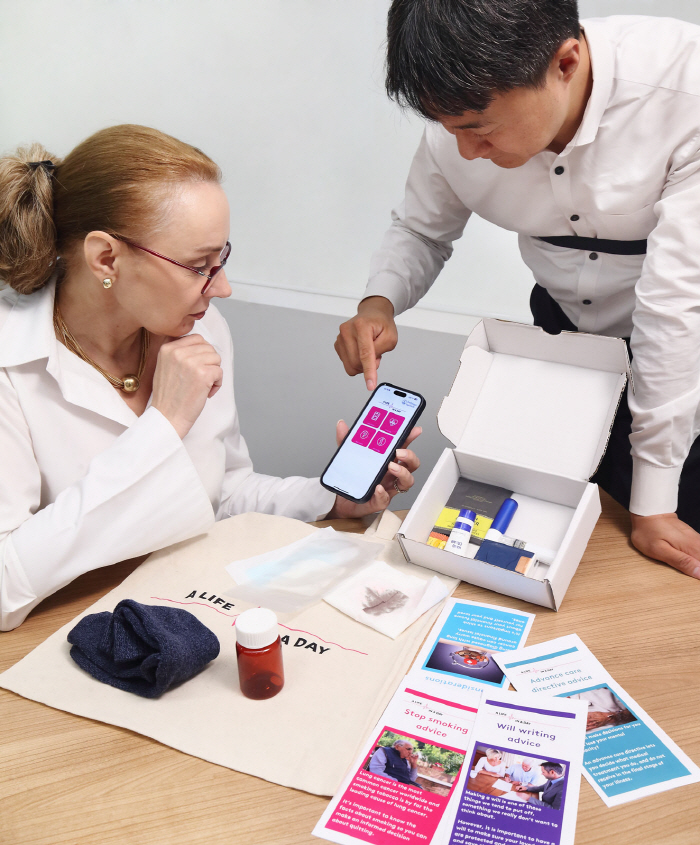Lung Cancer, Korea's No. 1 Cause of Cancer Death...Boehringer Ingelheim Korea conducted a patient experience program in November to mark the month of promoting lung cancer awareness
Nov 10, 2025
Lung cancer ranked No. 1 cause of cancer death in Korea, with about 22% (18,646) of all cancer deaths dying of lung cancer as of 2023.
Lung cancer is a malignant tumor that occurs in lung tissue and is divided into small cell lung cancer and non-small cell lung cancer depending on the size and shape of the cancer cells. Among them, non-small cell lung cancer accounts for 80-85% of lung cancer. Cough is the most common symptom of early lung cancer, but there may be no obvious symptoms in the early stages, and symptoms such as frequent cough, hemoptysis, and shortness of breath may appear after the disease has progressed to some extent. In the case of non-small cell lung cancer, a complete cure can be expected if early diagnosis and surgical treatment is performed, but 55-80% of non-small cell lung cancer patients are first diagnosed with local progression or metastasis.
Marking November's lung cancer awareness month, Boehringer Ingelheim Korea conducted an immersive program for executives and employees to experience the daily lives of non-small cell lung cancer patients.
"'A Life in a Day' is a global in-house program held by Boehringer Ingelheim at the same time every year at branches around the world, designed to experience the patient's life for a day, deeply understand the patient's physical and emotional difficulties, and spread a patient-centered culture. Executives and employees who participated in the program performed missions according to notifications of each situation using mobile apps and disease simulation kits for 24 hours, and directly felt the inconveniences and restrictions that patients experience in their daily lives.
In Beringer Ingelheim, Korea, eight key executives and employees, including President Annamaria Boy, participated in the lung cancer patient experience. Participating executives and employees performed missions such as ▲ difficulty breathing, ▲ expression of blood pressure, and ▲ physical discomfort according to the guidance of the mobile app. First, they experienced frustration and fatigue due to decreased lung function by reproducing limited breathing conditions using straws, and indirectly experienced anxiety and fear felt by patients by expressing blood talks generated during coughing as gauze. In addition, patients experienced physical discomfort in their daily lives, such as wearing a chest tightening belt or controlling changes in body temperature with a cool sheet.
A simulation was also conducted to understand the psychological burden and social reality of non-small cell lung cancer patients. From receiving notification of confirmation of non-small cell lung cancer through ▲ medical team phone simulation and listening to explanations on treatment direction, discussions with family, and remaining life expectancy, ▲ work life simulation experienced various situations that patients face in reality, such as notifying the company after diagnosis or contemplating taking a leave of absence and leaving the company. Finally, right after the end of the ▲ program, we shared the feelings and thoughts we felt during the experience through the workshop and had time to think about how to practice patient-centered thinking in real work.
President Annamaria Boy said "The starting point of patient-centered innovation is empathy, which takes a step closer to the patient's daily life. Through this program, we had a meaningful time to experience daily life from the patient's point of view and deeply understand the reality facing patients"This immersive experience not only helped us understand patients, but also reminded us of the empathy, insight, and heartfelt care-based innovation that Boehringer Ingelheim seeks. In the future, Boehringer Ingelheim will continue to develop a patient-centered approach and do its best to contribute to improving the quality of life of patients beyond meaningful changes throughout their treatment journey."
Lung cancer is a malignant tumor that occurs in lung tissue and is divided into small cell lung cancer and non-small cell lung cancer depending on the size and shape of the cancer cells. Among them, non-small cell lung cancer accounts for 80-85% of lung cancer. Cough is the most common symptom of early lung cancer, but there may be no obvious symptoms in the early stages, and symptoms such as frequent cough, hemoptysis, and shortness of breath may appear after the disease has progressed to some extent. In the case of non-small cell lung cancer, a complete cure can be expected if early diagnosis and surgical treatment is performed, but 55-80% of non-small cell lung cancer patients are first diagnosed with local progression or metastasis.
|
"'A Life in a Day' is a global in-house program held by Boehringer Ingelheim at the same time every year at branches around the world, designed to experience the patient's life for a day, deeply understand the patient's physical and emotional difficulties, and spread a patient-centered culture. Executives and employees who participated in the program performed missions according to notifications of each situation using mobile apps and disease simulation kits for 24 hours, and directly felt the inconveniences and restrictions that patients experience in their daily lives.
In Beringer Ingelheim, Korea, eight key executives and employees, including President Annamaria Boy, participated in the lung cancer patient experience. Participating executives and employees performed missions such as ▲ difficulty breathing, ▲ expression of blood pressure, and ▲ physical discomfort according to the guidance of the mobile app. First, they experienced frustration and fatigue due to decreased lung function by reproducing limited breathing conditions using straws, and indirectly experienced anxiety and fear felt by patients by expressing blood talks generated during coughing as gauze. In addition, patients experienced physical discomfort in their daily lives, such as wearing a chest tightening belt or controlling changes in body temperature with a cool sheet.
A simulation was also conducted to understand the psychological burden and social reality of non-small cell lung cancer patients. From receiving notification of confirmation of non-small cell lung cancer through ▲ medical team phone simulation and listening to explanations on treatment direction, discussions with family, and remaining life expectancy, ▲ work life simulation experienced various situations that patients face in reality, such as notifying the company after diagnosis or contemplating taking a leave of absence and leaving the company. Finally, right after the end of the ▲ program, we shared the feelings and thoughts we felt during the experience through the workshop and had time to think about how to practice patient-centered thinking in real work.
President Annamaria Boy said "The starting point of patient-centered innovation is empathy, which takes a step closer to the patient's daily life. Through this program, we had a meaningful time to experience daily life from the patient's point of view and deeply understand the reality facing patients"This immersive experience not only helped us understand patients, but also reminded us of the empathy, insight, and heartfelt care-based innovation that Boehringer Ingelheim seeks. In the future, Boehringer Ingelheim will continue to develop a patient-centered approach and do its best to contribute to improving the quality of life of patients beyond meaningful changes throughout their treatment journey."
This article was translated by Naver AI translator.














